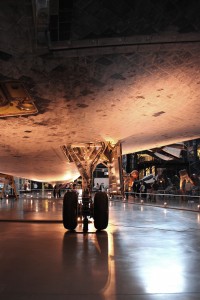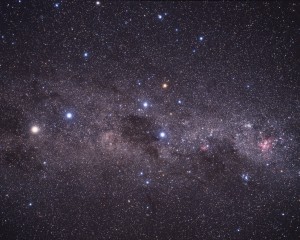I left for Los Angeles and my encounter with Endeavour just two days after returning from a visit to the Smithsonian’s Steven F. Udvar-Hazy Center in Chantilly, Virginia. The highlight of the Smithsonian visit was the Space Shuttle Discovery, of course, but after spending three days with Endeavour, I was a little hesitant to go back and look at my photos from my day at the museum. I was worried that the experience, even though it was so recent, wouldn’t hold up to the weekend following Endeavour. Of course, it doesn’t in many ways, but in others, seeing Discovery was also a great experience.
Endeavour’s landing gear was retracted during its move to the California Science Center, of course. I didn’t really think about it at the time, but when I started sorting through my Smithsonian photos, I realized how different the undersides of the two spacecrafts appeared, one staged for landing, the other staged for transport. The experience of scale was quite different, too. On the streets of L.A., Endeavour seemed like a behemoth, lumbering down the center lane. At Udvar-Hazy, Discovery seems quite small, although not as small as the Mercury capsule perched off to the side.
Otherwise, the real lesson I learned by comparing the two sets of photos: it’s vastly easier to figure out exposure and white balance when I’m outdoors in persistent lighting/weather conditions. Museum lighting continues to be a challenge for me. Most of my problems could be solved with a tripod, but white balance is always difficult in a creatively lit museum. It’s a good thing I’m not being paid for this.




